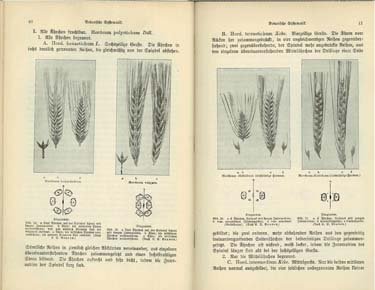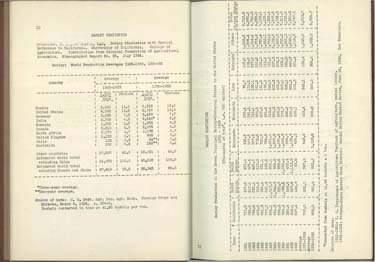Barley and Malt
Barley
Barley used for brewing is categorized into two types, two row and six row barley. This refers to the arrangement of seeds on the seed head, shown here (six row on the left hand page and two row on the right hand page). Six row and two row barleys produce differing amounts of starches and enzymes, so brewers generally use both kinds.
Barley Statistics
Barley has been an economically important crop in the the United States and throughout the world. Statistics like these are collected by various governments and published in government reports, business journals, and other resources.
Barley and Malt
Barley (Hordeum sp.) belongs to the family of grasses (Gramineae). In beer production, barley is "malted", i.e., germinated under carefully controlled conditions of moisture content, temperature and time. Enzymes in the barley partially degrade the starch in the kernels of grain to create fermentable sugars, creating "green malt." This malt is then dried in kilns, ground and mixed with water to create the "mash". "Mashing" continues the process of converting starches to sugars and other compounds which dissolve into the water. After "mashing" is complete, the liquid (called "wort") is filtered to remove the solids left from the grains. This filtering process is referred to as "lautering."

Quante, Hugo. Die Gerste, ihre botanischen und brautechnischen Eigenschaften und ihr Unbau, Verlagsbuchhandlung Paul Parey, Berlin, 1913. Crerar 633.207 R300

U.S. Department of Agriculture, Bureau of Agricultural Economics Grain Division. Barley and Barley Malt Abstracts and References: Grades, Statistics, Tariffs, Varieties, Quality Requirements, Uses, and Related Subjects, Also Lists of Brewing Journals, and Manufacturers of Barley Malt and Pearled Barley, 1935. Crerar 633.207 T500
